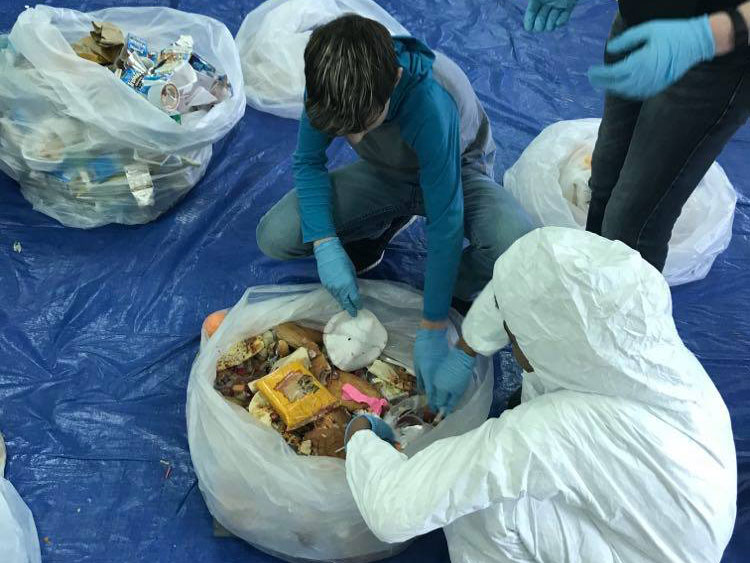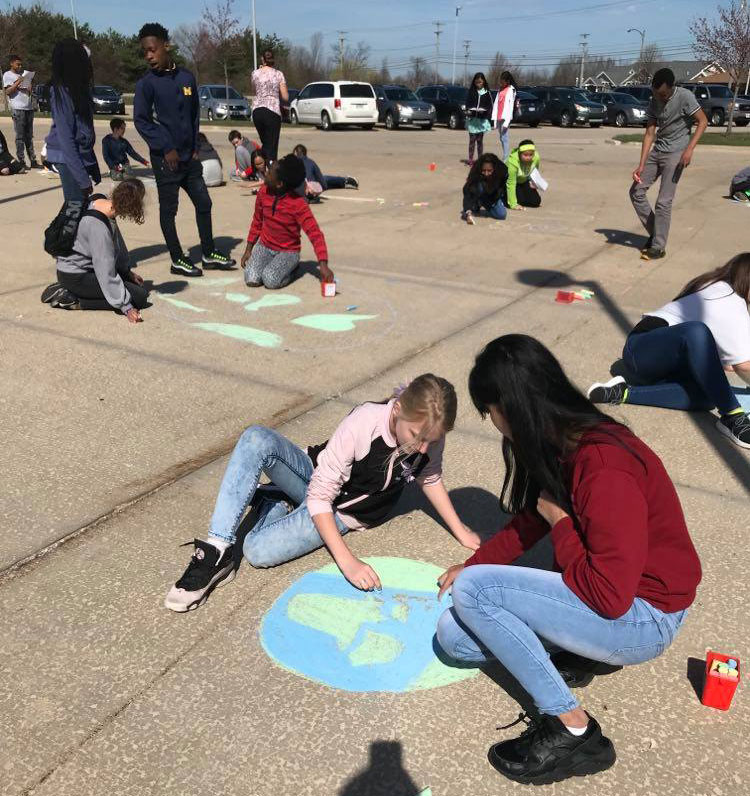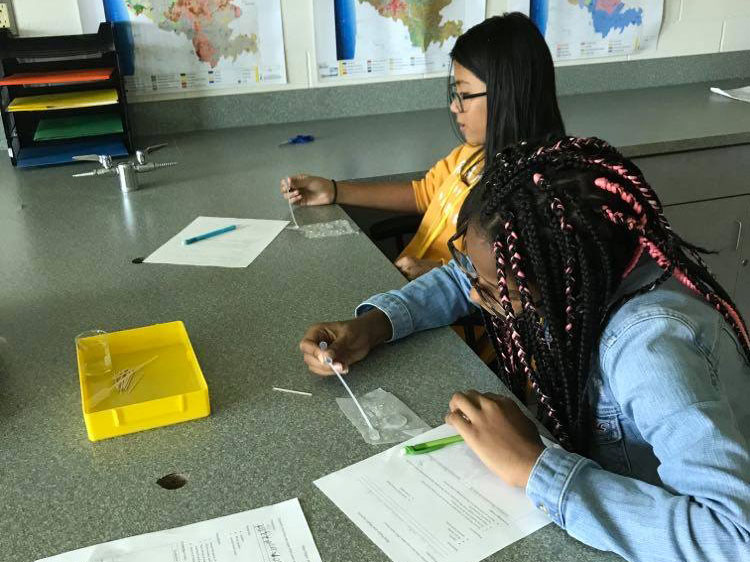Three years ago, Amelia Haywood, Charlotte VanWingen, Sammi Geurink and fellow Crestwood Middle School students approached their teacher Bobbie Fletcher with a Michigan Green School application and a vision for a more eco-friendly school.
Fletcher was all in. She organized 110 sixth, seventh and eighth grade students– including Amelia, Charlotte and Sammi– to begin working toward their green goal.
“It all started as an idea. We really wanted to do something to make an impact,” Amelia said. “The environment is not going in a good direction and everyone needs to do our part to bring awareness to that fact.”
Michigan Green Schools challenges K-12 students in Michigan to achieve environmental goals to protect the state’s air, water, land and animals. To be considered for Michigan Green School status, a school must complete at least 10 out of 20 points of educational environmental activities.
By March 2020, Crestwood Middle School completed all 20 points, achieving an Evergreen School Environmental Stewardship Designation from the agency.
“I am so proud of the students,” Fletcher said. “They brought me their ideas, did their research and proved to me we could do this. They impressed me with the tenacity of their involvement.”
Collectively, the students divided themselves into committees, with the older students leading the research and implementation of the projects.
“The students were my teachers. The seventh and eighth graders guided the younger students, helping us complete the necessary tasks to reach our goal,” Fletcher said.
Now an East Kentwood freshman, Charlotte felt empowered working alongside her classmates to achieve their goal.
“It was an amazing thing. You have these ideas in your head, but actually being able to make them happen is the best feeling,” Charlotte said. “Being able to work with my classmates on something we were passionate about was a wonderful bonding experience and it almost felt like riding a roller coaster; I would get this rush of adrenaline and would be on a high for the rest of the day.”

Creating Lasting Environmental Impacts
To qualify for Green School certification, the Crestwood team submitted an application describing their completed recycling, energy and environmental protection projects. Students’ projects included implementing a recycling system called PaperGator, constructing a tower garden to grow their own produce, and having occupancy sensors installed for lights.
The students also worked together to design recycling and eco-friendly lessons for elementary schools.
According to Fletcher, the crew “dove” into their projects quite literally.
“Pre-pandemic, the students spent three days collecting 150 pounds of lunchroom trash and sorted it into piles of recyclable material, compost, plastic silverware, styrofoam and actual trash,” Fletcher said. “After sorting, we found only 23.7 pounds of actual trash and 55.5 pounds of recyclable materials.”
The results from the dumpster diving research investigation were used to persuade Crestwood administrators to initiate a recycling program. The students also thought more critically about how much waste they contributed to local landfills.

Building Awareness and Sustainability
The environmentally savvy students experienced very little push-back when it came to turning their ideas into actions, according to Amelia, though the pandemic curtailed some of the excitement.
“School shut down a week before we were going to implement our recycling plans,” Amelia explained. “The whole school was excited and really supportive, they just didn’t get to see the full results when our plans got put on hold.”
Fletcher and her students still celebrated their achievements and shared the news of their certification with Superintendent Michael Zoerhoff, who acknowledged their designation in his Welcome Back Letter.
Working towards their goal not only impacted students’ lives in school, but also at home.
“When we learned about plastics and recycling in sixth grade, I told my parents about what I learned and we started recycling things more often,” Amelia said. “I want to bring what I learned at Crestwood with me to my campus because students don’t always think about how much plastic accumulates.”
Fletcher referred to the research the students found to be a big “ah-ha” moment of awareness on how individual actions impact the world.
“It made me aware of what I throw away and recycle at home,” Fletcher said. “Plastic is the worst thing in our world and it does not go away; it only breaks down.”
While plastic in landfills is not sustainable for the environment, the students who helped Crestwood become a Michigan Green School hope the fruits of their efforts last long after their departure from middle school.
“Things like the recycling program and the interactive learning activities we created will stay around for a long time and will impact future classes of students,” Sammi said.
Fletcher and the Crestwood staff are also committed to continuing the original group’s work with incoming students so they can take over where their peers left off.
“The most rewarding part was my kiddos stuck together for three years, never gave up and developed wonderful friendships,” Fletcher said.
When their Michigan Green School finally came in the mail, Fletcher felt mixed emotions.
“It was such a happy moment, but crushing not to have the kids in school to celebrate,” Fletcher said. “They started something big and in the future, we hope to get more Kentwood schools involved and educated.”
















